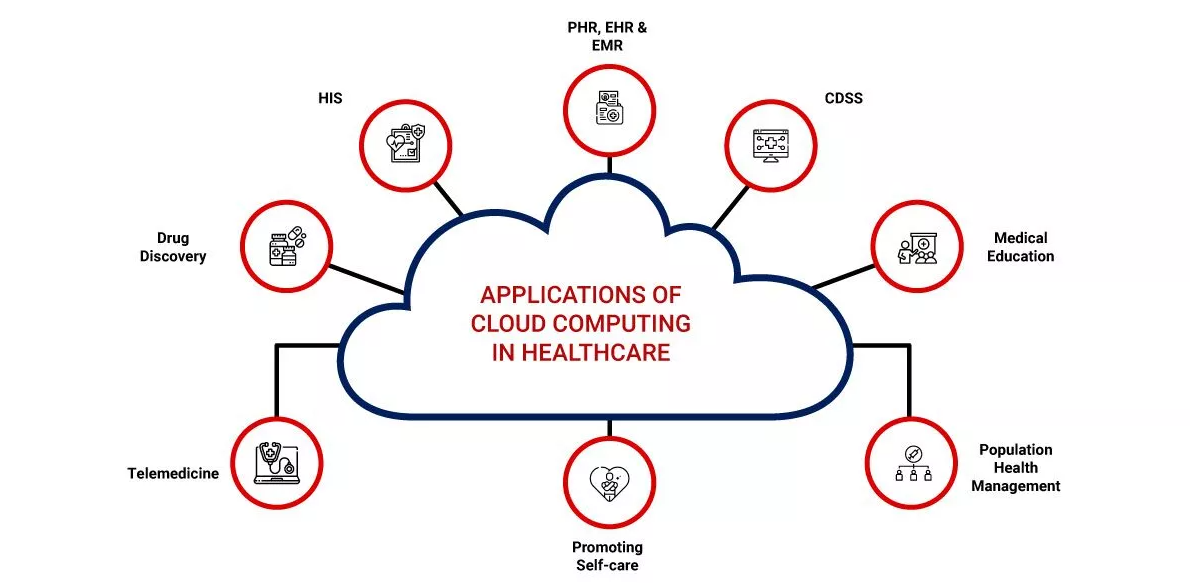Introduction: Understanding Cloud Computing in Healthcare
Cloud computing has emerged as a transformative technology in various industries, including healthcare. The healthcare sector is increasingly leveraging the power of cloud computing to enhance patient care, improve operational efficiency, and drive innovation. This article explores the applications, benefits, and challenges of cloud computing in healthcare, shedding light on how this technology is reshaping the industry and improving healthcare delivery.
Overview of Cloud Computing Technology
Cloud computing refers to the delivery of computing resources and services over the internet on-demand. It allows healthcare organizations to access and utilize a shared pool of resources, including storage, processing power, and software applications, without the need for on-premises infrastructure. The cloud offers scalability, flexibility, and cost-effectiveness, enabling healthcare providers to efficiently manage and analyze vast amounts of data while ensuring data security and accessibility.
Application of Cloud Computing in the Healthcare Industry
Cloud computing finds numerous applications in the healthcare industry. It facilitates electronic health record (EHR) systems, enabling seamless access and sharing of patient records among healthcare providers. Cloud-based telemedicine platforms enable remote consultations, improving access to healthcare in underserved areas. Additionally, cloud-based medical imaging solutions enhance collaboration among radiologists and enable secure storage and analysis of diagnostic images.

Challenges and Concerns of Cloud Computing in Healthcare
Despite the benefits, cloud computing in healthcare comes with its share of challenges and concerns. One primary concern is ensuring the security and privacy of patient data stored in the cloud. Healthcare organizations must adhere to stringent data protection regulations and implement robust security measures to safeguard patient information. Other challenges include interoperability issues, potential disruptions in internet connectivity, and the need for reliable backup and disaster recovery strategies.
Advantages and Benefits of Cloud Computing in Healthcare
- Enhanced data accessibility and sharing
- Scalability and flexibility of computing resources
- Cost savings and operational efficiency
- Facilitates remote and telemedicine services
- Enables collaborative healthcare workflows
- Improved data analytics and insights
Best Practices for Implementing Cloud Computing in Healthcare
To maximize the benefits of cloud computing in healthcare, organizations should follow best practices. This includes conducting thorough risk assessments, selecting reputable cloud service providers with robust security measures, implementing data encryption, and establishing data backup and disaster recovery plans. Additionally, ensuring compliance with regulatory requirements, training staff on cloud-based technologies, and regularly monitoring and evaluating the cloud infrastructure are essential for successful implementation.
“The cloud is the backbone of modern healthcare, enabling seamless collaboration, real-time access to patient information, and driving innovation in medical research.”
Conclusion:Embracing the Potential of Cloud Computing in Healthcare
In conclusion, cloud computing has the potential to revolutionize healthcare by improving access to information, enabling collaboration, and enhancing operational efficiency. The benefits of cloud computing, such as enhanced data accessibility, scalability, and cost savings, make it an attractive technology for healthcare organizations. However, addressing the challenges of security, privacy, and interoperability is crucial for successful adoption. By embracing the potential of cloud computing, healthcare providers can unlock new possibilities for delivering quality care, driving innovation, and improving patient outcomes.

